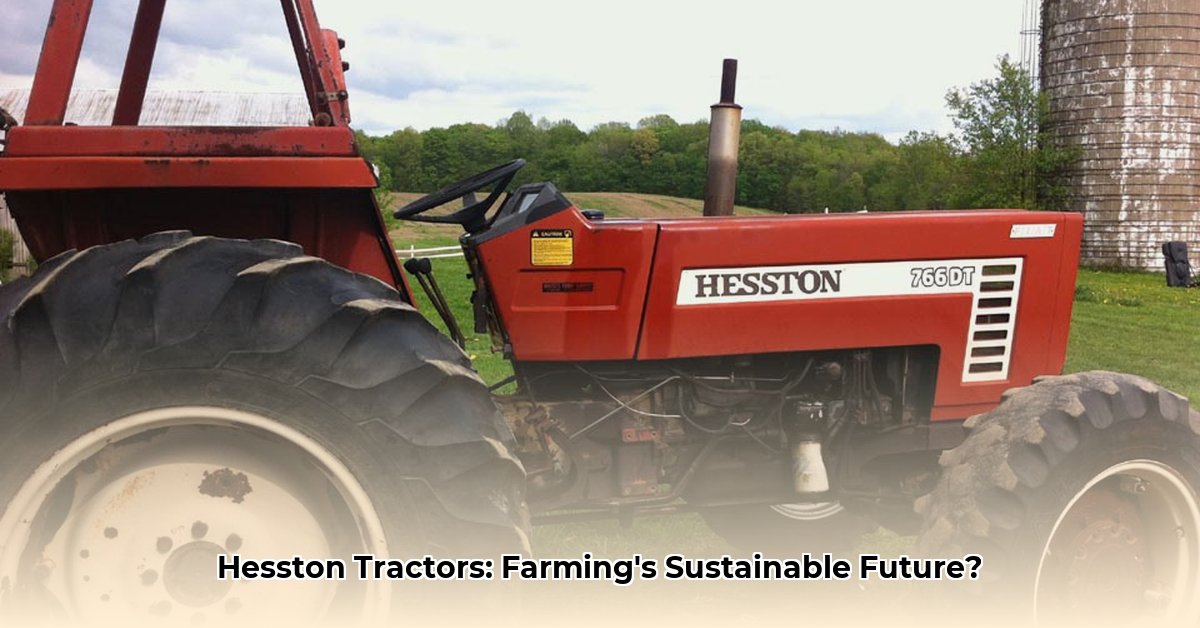
Hesston tractors: a name synonymous with agricultural innovation. But in an era defined by climate change and the urgent need for sustainable practices, how does this legacy of efficiency stack up against modern environmental concerns? This article explores Hesston's historical impact, its current sustainability profile (acknowledging data limitations), and the path towards a greener future for both the company and the agricultural industry.
Hesston's Legacy: Revolutionizing Harvesting
Hesston's journey began with a singular breakthrough: the 1955 introduction of the self-propelled windrower. Before this invention, hay harvesting was a laborious, time-consuming process. The windrower dramatically increased efficiency, transforming agricultural practices and setting the stage for future innovations. This marked a pivotal shift in agricultural technology, impacting farmers worldwide and cementing Hesston's place in agricultural history. Subsequent acquisitions, culminating in AGCO’s ownership, have further propelled its development and reach.
The Environmental Footprint: A Complex Picture
While Hesston's machinery demonstrably boosted farm productivity, minimizing labor requirements and accelerating harvest times, the environmental implications require careful consideration. Large agricultural machinery, including Hesston tractors, contribute to soil compaction (reducing crop yield and impacting biodiversity). Additionally, significant fuel consumption contributes to greenhouse gas emissions.
However, a comprehensive assessment is hampered by a lack of readily available, publicly accessible data. Detailed lifecycle assessments (LCAs)—analyzing environmental impact from raw material sourcing to machine disposal—are crucial yet scarce. Information regarding fuel efficiency across models and the overall lifespan of Hesston tractors remains limited. This data gap underscores the need for increased transparency from manufacturers and independent research to fully evaluate the environmental impact. How can farmers effectively choose the "greenest" option when crucial data is unavailable?
The Path to Sustainable Agriculture: Collaboration and Innovation
Addressing the sustainability challenge requires a multi-pronged approach. AGCO, as Hesston's parent company, has a crucial role to play in promoting transparency. This involves publicly releasing comprehensive LCAs for its products, detailing fuel consumption, emissions, and material sourcing. This would allow for accurate comparisons with competitors.
Furthermore, collaboration is paramount. Universities, environmental NGOs, and government agencies need to work together to establish standardized sustainability metrics for agricultural machinery. Such standardization would allow for meaningful comparisons between different brands and models. This collaborative effort to define and measure sustainability is vital.
The agricultural machinery industry must prioritize innovations that directly address environmental concerns. This includes:
- Fuel Efficiency: Developing more fuel-efficient engines and exploring alternative, cleaner fuels are essential.
- Durability and Repairability: Designing longer-lasting, easily repairable tractors minimizes waste and reduces the need for frequent replacements.
- Sustainable Materials: Using ethically sourced and environmentally friendly materials in manufacturing significantly reduces the overall environmental impact.
Farmers' Role: Informed Choices for Sustainable Farming
Sustainable practices extend beyond the machinery itself. Farmers play a vital role by making informed equipment choices and adopting environmentally conscious farming techniques. Precision agriculture leverages technology to optimize fertilizer and pesticide use, enhancing sustainability beyond just the choice of tractor.
The choices farmers make have a direct impact on agricultural sustainability. Considering the long-term operating costs, fuel efficiency, durability, and repairability of their machinery is vital, contributing to a more sustainable agricultural future.
Conclusion: Transparency and Action for a Greener Future
Hesston's legacy of innovation is undeniable. However, its future contribution to sustainable agriculture depends critically on increased transparency, a commitment to data-driven decision-making, and collaborative efforts across the industry. The information gap regarding sustainability needs to be filled, leading to informed choices by both manufacturers and consumers. The sustainability of agriculture hinges on this collective commitment to environmental responsibility. Are we ready to meet this challenge?